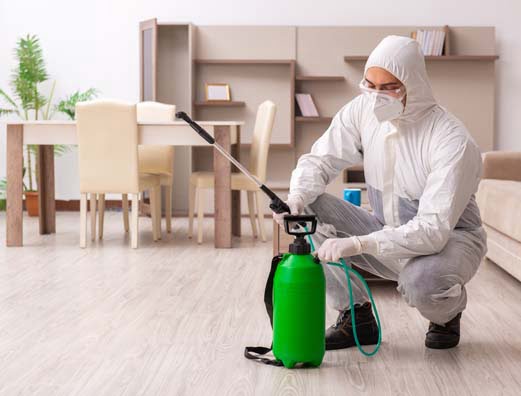Unseen Assaults on the Skin
While some pests make their presence known through visible damage or audible disturbances, others operate in a more covert manner. Numerous pests use their mouthparts to feed on human blood, causing an array of skin issues. Most of these bites and stings result in minor itching or irritation. However, some can escalate into severe allergic reactions or even become gateways for infections. It underscores the significance of not just reactive but proactive pest control measures.
The narrative around pests often revolves around the visible disturbances they cause - the gnawed wires, the holes in clothes, the droppings in corners. But, as we've unveiled, the real threat often lies in the unseen, the overlooked. These creatures pose significant health risks, some of which can have long-term implications. Acknowledging these hidden dangers is the first step. The next, and arguably the most critical, is seeking timely and effective interventions to ensure our homes remain the safe havens they are meant to be.
Opting for anything less than professional when dealing with pests can prove to be a grave error. Here are five significant pitfalls when one doesn't engage the right pest control:
- Incomplete Eradication: Without expert intervention, you might not wholly rid your home of the pest issue, leading to recurring problems.
- Exposure to Harmful Substances: Those without the necessary expertise may misuse fumigation methods, endangering household members.
- Potential Property Damage: If not handled correctly, some pests can cause extensive damage to your property over time.
- Wasted Resources: Ineffectual pest control methods can drain both time and money.
- Overlooking Secondary Issues: Professionals have the trained eye to spot and address secondary issues that might escape the layperson's notice.
Enlisting the right pest control service isn't just about dispatching nuisances; it's a step towards safeguarding your home. Environ Pest Control London offers reliable and efficient solutions to your pest-related concerns.
Experience the Environ Pest Control London difference today!
Don't let pests unsettle your peace and tranquillity. With Environ Pest Control London, you're partnering with a team that prioritises your well-being. Our expertise and proven pest control methodologies ensure your home remains a sanctuary. Reach out to us at 020 3875 8225 or send an email to info@environpestcontrol.co.uk. Secure your peace of mind today!
Stay tuned for our pest updates!
We're grateful for your time and interest in this blog. For more insights and guidance, be sure to check out our other pest control blog posts, like Banishing unwanted intruders: Mastering pest control in the modern home. Your continued support inspires us every day! Stay in the loop with us! Follow our social media channels to get the latest updates, tips, and special offers.
FAQs: Navigating the world of pest control
Why is consistent pest control vital?
Consistent pest control isn't merely about immediate relief from pests; it's a long-term strategy to maintain a clean, safe, and disease-free environment in your home. Regular interventions ensure that pest populations are kept in check, preventing large-scale infestations that can be both damaging and costly. By keeping a consistent schedule, you also protect your property's value and the health of your loved ones.
Is fumigation safe for my family and pets?
Absolutely. When conducted by trained professionals, fumigation is both safe and highly effective. Experts are equipped with the knowledge to use the right chemicals, in the correct quantities, ensuring no harm comes to the inhabitants of the home. After the process, they'll also advise on any necessary precautions to ensure the safety and health of all family members, including pets.
How frequently should I have my home checked for pests?
It's advisable to have your home inspected for pests annually. Regular checks can identify potential issues before they escalate into full-blown problems. However, if you notice any signs indicative of a pest infestation—like unusual noises, droppings, or property damage—it's crucial to seek professional advice sooner. The earlier a problem is identified, the easier (and often cheaper) it is to address.
What indicators suggest a pest infestation?
Several signs can hint at a pest problem. These include droppings, which pests like rats or cockroaches might leave behind. Physical damage, such as chewed wires or holes in fabrics, can also indicate pests. Unusual sounds, especially during the night when many pests are active, like the scuttling of rodents or the buzzing of insects, are also warning signs. Additionally, if you observe nests or witness pests in broad daylight (which is unusual for many pests), it's a clear indication of an infestation.
How does Environ address the common clothes moth issue?
Addressing the common clothes moth requires a multi-faceted approach. At Environ, we employ specialised fumigation techniques tailored specifically for moth control. These treatments target all life stages of the moth, from eggs to adults, ensuring a comprehensive eradication. Post-treatment, our experts also provide guidance on preventive measures, including tips on storage and cleanliness, to minimise the chances of a future infestation. Our goal is not just to treat but also to educate homeowners on maintaining a moth-free environment.




